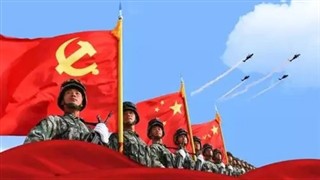Few deny China is a serious threat to the free world and the international rules-based economic system. It possesses advanced military technologies and is growing exponentially in military power, but is it ready to challenge the United States for world leadership? Or is the world witnessing a blustering China that has reached its apex? Despite CCP propaganda and misinformation, the reality is that China and its communist leaders are not destined to lead a new world order, according to most political analysts in Washington, although the country remains a serious threat.
The leadership in Beijing touts big advances in its economy; and it has advanced significantly from a developing nation into an industrialized state. There are signs, however, that it may not continue its ascent in future decades. Foreign policy analysts note that a developing state’s economy is typically expected to expand more than a mature economy, like that of the United States. That expectation does not make the communist giant less dangerous today and, perhaps, even increases the likelihood of it committing an egregious aggressive act against neighboring Taiwan or other Pacific Rim countries.
For the first time this year in March, the Chinese yuan became the most widely used currency for cross-border transactions in China, according to official data from Beijing. While it sounds impressive and does reflect Chinese efforts to internationalize use of the yuan, a closer examination reveals what this means in terms of the global economy. China’s State Administration for Foreign Exchange, according to a Reuters calculation, indicates that cross-border payments and receipts in yuan rose to a record $549.9 billion, up approximately 21% from $434.5 billion in February.
Its use in global trade finance, although growing, remains very low. Reuters reports this week that data from the Society for Worldwide Interbank Financial Telecommunications (SWIFT), also referred to as a CIC Code, “showed that the yuan’s share of global currency transactions for trade finance rose to 4.5% in March, while the dollar accounted for 83.71%.” That does not even place China in the top eight that include the US Dollar in first place, followed by European Euro, Japanese Yen, British Pound, Swiss Franc, Canadian Dollar, Australian/New Zealand Dollar, and the South African Rand. According to the Global Times, the yuan now accounts for only 7% of all foreign exchange trades. It is impressive for a nation-state that 35 years ago could not feed its own population, but it is not a strong indicator that China is the up-and-coming global economic power it claims.
With 18% of the world’s population, the Chinese economy is expected to contribute a third of global growth in 2023. Again, it may sound impressive, but the United States with less than 5% of the world’s population generates more that 20% of the world’s total income, according to the US Trade Representative’s Office. America remains the world’s largest national economy, leading global trader, and that is not going to change in the near future. A February International Monetary fund report by Diego Cerdeiro and Sonali Jain-Chandra says that “With a shrinking labor force and diminishing returns to capital investment, [China’s] growth in coming years will depend on boosting declining productivity growth. Without reforms, we currently estimate growth to fall below 4 percent over the next five years.” This number falls well below the required minimum in China’s newest 10 Year Economic Plan. This is not the story China wants told to the world.
The IMF report adds that “Reforms such as gradually lifting the retirement age to increase labor supply, strengthening unemployment and health insurance benefits, and reforming state-owned enterprises to close their productivity gap with private firms would significantly help to boost growth in coming years. Undertaking such reforms would enable China’s income level to rise by around 2.5 percent in five years.” The population faces many unsurmountable economic obstacles. The greatest challenge may be one that demographers say can’t be changed. China’s population is declining.
If the government were able to force every woman of child-bearing years to have as many children as possible of her lifetime, China cannot physically replace its population. Its decades long, draconian, one-child policy has doomed China’s future growth for generations. At the same time that its overall population size is decreasing, the percentage of those over 60 will increase from 17.8% in 2020 to 26.19% in 2030 and 38.81% by 2050. By 2100 over 47% of the Chinese population will be of retirement age.
In comparison, by 2050, Statista demographic data estimates that only 22% of the United States will be senior citizens. The numbers look just as bleak when comparing annual salaries. The 2021 average US salary, according to Statista, is $71,456. In China there are great differences among the provincial areas from a low in Henan of $9,835 to $21,839 in Shanghai, a city that ranks the 12th most expensive to live in globally and Beijing at $24, 386 that ranks the 10th most expensive.
China is dangerous today for a number of reasons. Countries that are in decline, or near the precipice, will use all means possible to avoid the downfall. Last month China officially registered its first population decline data. The leadership in Beijing, some military analysts suggest, recognizes the need to act soon before it loses its ability to do so. There are no signs in Beijing that Xi Jinping or others in the senior CCP leadership are looking toward reforms as the means of escape. Xi remains belligerent in his speech. His actions are defiant and he shows no intention of abiding by the global norms of behavior used in the international rules-based system that has brought great prosperity to so much of the world.
Daria Novak served in the U.S. State Dept.
Illustration: China defence Ministry
